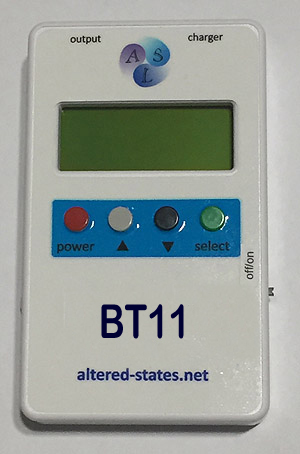Power Adapter
NZ$29.95
Approx USD$17.27

Radon is the second-leading cause of cancer.
You can't
smell it, see it or taste it but it might be present in
your home

Keep Yourself and your Family Safe
In 1984, the scientific world woke up to the existence
of radon in homes. A construction engineer triggered radiation
alarms while entering the Limerick nuclear power plant
near Philadelphia. His home in Boyertown was tested and
the radon concentration was a shocking 2,700 pCi/L.
The family, including small children, was immediately
evacuated. Very high radon levels were also sound in nearby
houses. This region, known as the Reading Prong, has low-grade
uranium deposits and encompasses parts of Pennsylvania,
New Jersey, and New York. Source: American Academy of Pediatrics - The radon record.
Radon up your nose!
About 600,000 workers were exposed to radioactive materials
in 14 nuclear weapons plants since the beginning of the
Manhattan Project. Their radiation exposure was within
the official "safety limits." However, increased
rates of leukemia, cancers, vision difficulties, chronic
fatigue syndrome and other health problems have been observed.
The identified 22 types of cancers include cancer of the
lung, prostate, bladder, kidney, and Hodgkin's lymphoma.
Some scientists believe that radiation damages the human
immune system, leaving people vulnerable to a wide range
of other diseases.
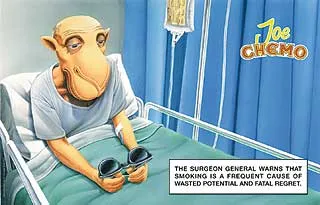
Until 1999, the U.S. government disputed reports that
low-level ionizing radiation is harmful. DOE and DOD waged
media campaigns against "fear mongers" and spent
tens of millions of dollars on lawyers. Then, after decades
of denials, the government finally conceded that the radiation
exposure to workers at nuclear weapons plants caused a
wide range of cancers. President Clinton apologized to
the "heroes of the nuclear age." But by then,
many have died. The US Congress agreed to pay out $150.000
to each of the sick survivors, but denied them unlimited
healthcare. Although private companies ran many of these
plants for profit, the U.S. taxpayers will pick up the
tab. Source: The New York Times, January 29, 2000
Radiation
Dr. John Gofman, a prominent radiologist who helped
to build the first nuclear bombs, concluded that medical
irradiation has caused most of the cancers and coronary
heart diseases in the twentieth century. He studied
mortality rates from 1940 to 1990 of the entire U.S.
population. He found that the mortality rates for cancers
and coronary heart disease increase proportionally
with the number of physicians per 100,000 people in
each region, while all other diseases decrease. More
physicians in a region means more x-rays to its population.
In the case of coronary heart disease, the cause appears
to be radiation-induced mutations in the coronary arteries.
Statistical analysis shows that medical irradiation
has caused over a half of all cancers, two thirds
of coronary heart diseases, and over 80% of breast
cancers in the US. Dr. Gofman stresses that the radiation
from each medical or dental x-ray can be reduced
several-fold without sacrificing accuracy. All x-ray
machines should be regularly calibrated and the doses
measured. People should refuse unnecessary x-rays.
John W. Gofman, M.D., Ph.D. 1999: Radiation from
Medical Procedures in the Pathogenesis of Cancer
and Ischemic Heart Disease |
Dog saves people from radon
Back in the late 80's, I had a client whose dog died prematurely.
They took it to the vet and x-rays showed the dog died
from lung cancer. They then tested their home and found
radon concentrations of 150 pCi/l! The owners stated
that their dog probably saved their lives.
Source: Jay Bauder, Bauder Basement Systems, Inc
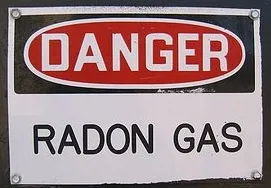
Radon is a chemically inert, naturally occurring radioactive
gas without odour, colour or taste. It is produced from
radium in the decay chain of uranium, an element found
in varying amounts in all rocks and soil all over the
world. Radon gas escapes easily from the ground into
the air and disintegrates through short-lived decay products
called radon daughters or radon progeny.
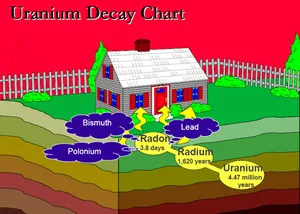 |
Airborne Radon causes over 21,000 lung cancer deaths
every year in the United States. Radon is a cancer-causing
natural radioactive gas that you cannot see, smell
or taste. Its presence in your home can pose a danger
to your family's health.
Radon is the leading cause of lung cancer among
non-smokers. Radon is the second leading cause of
lung cancer in America. |
The short-lived
progeny, which decay emitting heavily ionizing radiation
called alpha particles, can be electrically charged
and attach to aerosols, dust and other particles in the
air
we breathe. As a result, radon progeny may be deposited
on the cells lining the airways where the alpha particles
can damage the DNA and potentially cause lung cancer.
When radon gas itself is inhaled, most is exhaled before
it decays. A small part of the inhaled radon and its
progeny may be transferred from the lungs to the blood
and finally to other organs.

Due to dilution in the air, outdoor radon levels are
usually very low. Radon can also be found in drinking
water, the concentration depending on the water source,
and this can sometimes present a hazard. Radon levels
are higher indoors, and much higher radon concentrations
can be found in places such as mines, caves and water
treatment facilities. Health effects have been found
in, for example, miners. However, the lower concentrations
- found, for example, in normal buildings and to which
large populations are exposed – also confer health
risks. For most people, by far the greatest exposure
to radon comes in the home.
News Flash
Swine flu jab link to killer nerve disease: Leaked
letter reveals concern of neurologists over 25 deaths
in America Read
more:
I really hope you Lovely people have your colloidal
silver units |
Radon in homes
The concentration of radon in a home depends on the amount of radon-producing
uranium in the underlying rocks and soils, the routes available for
its passage into the home and the rate of exchange between indoor and
outdoor air. Radon gas enters houses through openings such as cracks
at concrete floor-wall junctions, gaps in the floor, small pores in
hollow-block walls, and through sumps and drains. Consequently, radon
levels are usually higher in basements, cellars or other structural
areas in contact with soil.
| How does it get into my home?
Any home may have a radon problem, including
your home!
Radon is a radioactive gas. It comes from the
natural decay of uranium that is found in nearly
all soils. It typically moves up through the
ground to the air above and into your home through
cracks and other holes in the foundation. Your
home traps radon inside, where it can build up.
Any home may have a radon problem. This means
new and old homes, well-sealed and drafty homes,
and homes with or without basements.
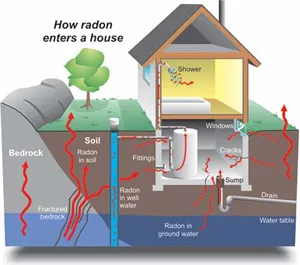
|
Exchange of indoor air with the outside depends on the
construction of the house, ventilation habits of the
inhabitants, and sealing of windows. The radon concentration
in houses directly adjacent to each other can be very
different. Radon concentrations within a home can vary
with the time of the year, from day to day and from hour
to hour. Because of these fluctuations, estimation of
the annual mean concentration of radon in indoor air
requires reliable measurements of mean radon concentrations
for at least three months and preferably longer. Short
term radon measurements give only limited information.
| Death by lung cancer from radon exposure exceeds
the number of deaths per year due to drunk driving,
falls in the home, drownings and home fires! |
 |
The amount of radon in a building is dependent
upon several factors. These factors include the geology,
a driving force, pathways into the building, and
the ventilation rate. As the concentration of uranium
is in the underlying soil increases, so does the
strength of the radon. Radon is transported to buildings
more easily through permeable soils. Buildings can
create pressure differentials that will draw in the
soil gases. Radon can enter the building through
many paths such as cracks in the foundation, utility
penetrations, sumps, and floor drains. The ventilation
rate of the building affects the final radon concentration. |
Radon radioactivity is measured in becquerels (Bq).
One becquerel corresponds to the transformation (disintegration)
of one atomic nucleus per second. Radon concentration
in air is measured as the number of transformations per
second in a cubic metre of air (Bq/m3). The average radon
level outdoors varies between 5 and 15 Bq/m3, but both
higher and lower values have been observed.
Based on a series
of surveys, the global mean indoor
radon concentration is estimated to be 39 Bq/m3, with
marked variation between countries reported by the United
Nations Scientific Committee on the Effects of Atomic
Radiation (UNSCEAR). Very high radon concentrations (>1000
Bq/m3) have been found in countries where houses are
built on soils with a high uranium content and/or high
permeability of the ground. In specific geological formations
found, for example, in many European countries, radon
released from underground waters easily permeates through
the rock to the surface and into buildings. Overall,
many countries around the world may have tens of thousands
of houses with indoor radon concentrations above levels
considered acceptable

Radon and Real Estate
Health effects of Radon
The main health hazard from high radon exposure is an increased risk
of lung cancer. This has been substantiated in many studies of uranium
miners.

Based on these studies, the International Agency for
Research on Cancer (IARC), a WHO agency specializing
in cancer, and the US National
Toxicology Programme have classified radon as a human carcinogen.
Scientists have also been investigating whether levels
of radon found in homes
and other places are a significant hazard to health. These studies
are now complete and pooled analyses of key studies in Europe, North
America and China have confirmed that radon in homes contributes
substantially to the occurrence of lung cancers world-wide.
Recent estimates of the
proportion of lung cancers attributable to radon range from 6 to
15%. The pooling studies all agree on the magnitude of
the risk estimates.
| Will it really hurt me?
EPA already has a wealth of scientific data
on the relationship between radon exposure and
the development of lung cancer. Health authorities
like the Centers for Disease Control (CDC), the
Surgeon General , the American Lung Association,
the American Medical Association, and others
agree that we know enough now to recommend radon
testing and to encourage public action when levels
are above 4 pCi/L.
Radon is the second-leading cause of lung cancer
and is a serious public health problem.Radon
is the number one cause of lung cancer among
non-smokers, according to EPA estimates. Overall,
radon is the second leading cause of lung cancer.
Radon is responsible for about 21,000 lung cancer
deaths every year. About 2,900 of these deaths
occur among people who have never smoked. On
January 13, 2005, Dr. Richard H. Carmona, the
U.S. Surgeon General, issued a national health
advisory on radon. Visit www.cheec.uiowa.edu/misc/radon.html for
more on a study by Dr. William Field on radon-related
lung cancer in women.
http://www.epa.gov/radon/healthrisks.html
In the Southwest U.S. and in Port Hope, Ontario,
many homes and schools were built using sand-like
tailings from uranium mines as construction material.
Some of these buildings ended up with radon levels
higher than those permitted in mines. Similar (though
less severe) radon problems arose in Florida and
Newfoundland when phosphate tailings were used for
construction.
Source: Uranium: The Deadliest Metal |
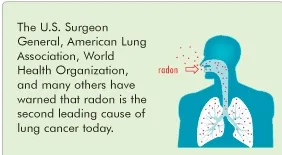
The recent pooled analysis of key European studies estimated
that the risk of lung cancer increases by 16% per 100
Bq/m3 increase in radon concentration. The dose-response
relation seems to be linear without evidence of a threshold,
meaning that the lung cancer risk increases proportionally
with increasing radon exposure.

The slow
progress to safety
From the results of the same study, when a non-smoker
is exposed to radon concentrations of 0, 100 and 400
Bq/m3, the risk of lung cancer by age 75 years will be
about 4, 5 and 7 in a 1000, respectively. However, for
those who smoke, the risk of lung cancer is about 25
times greater, namely 100, 120 and 160 in a 1000, respectively.
Most of the radon-induced lung cancer cases occur among
smokers.
Radon
- the Killer in Tobacco
Guidelines for concentrations of radon in air
and water
Most countries have adopted a radon concentration
of 200–400 Bq/m3 for indoor air as an Action or
Reference Level above which mitigation measures should
be taken to reduce the level in homes. Other countries
have chosen higher or lower Action Levels. The choice
of Action Levels generally has been based on the concept
of acceptable risk, i.e. these levels are thought to
represent population health risks similar to other everyday
risks.
Concerning drinking water, the 2004 WHO Guidelines for
Drinking Water Quality and the European Commission recommend
that controls - for example repeat measurements - should
be implemented if radon in public drinking-water supplies
exceeds 100 Bq/l. The United States has proposed a Maximum
Contaminant Level for radon of 150 Bq/l for private water
supplies. For public or commercial water supplies, the
European Commission recommends that remedial action be
taken if the radon level exceeds 1000 Bq/l. A tap water
radon concentration of 1000 Bq/l contributes 100 to 200
Bq/m3 to indoor air and thus corresponds to the indoor
air radon Action Levels discussed above.
A San Francisco company ushered in a craze
in radioactive health crocks in 1912, when it
was granted a patent
for "Revigorator". This device saturated
water with radon and people were advised to drink
six or more glasses each day. "Radithor",
a quack radon potion to cure sexual dysfunction
and everything else, was introduced in 1925. After
several
years, people started dying of the effects of this
potion. The manufacturer and user of Radithor died
14 years later of bladder cancer. No warnings to
the public were ever issued.
Hundreds of thousands of health-conscious Americans
drank bottled water laced with radium as a general
elixir, known popularly as "liquid sunshine." Soon,
radioactive toothpaste was marketed, then radioactive
skin cream. Chocolate bars containing radium were
sold as a "rejuvenator." As recently as
1952, LIFE magazine wrote about the beneficial effects
of inhaling radioactive radon gas in Montana mines.
Even today, people visit the radon-filled mines and
report multiple benefits. However, numerous studies
have concluded that the only demonstrable health
effect of inhaling radon is lung cancer. |
Dealing with radon in homes
Radon levels in indoor air can be lowered in
a number of ways, from sealing cracks in floors and walls
to increasing the ventilation rate of the building. The
five principal ways of reducing the amount of radon accumulating
in a house are:
•Improving the ventilation of the house and avoiding
the transport of radon from the basement into living
rooms;
• Increasing under-floor ventilation;
• Installing a radon sump system in the basement;
• Sealing floors and walls; and
• Installing a positive pressurization or positive supply ventilation system.
Radon safety should be considered when new houses are built, particularly
in high radon areas. In Europe and the United States, the inclusion of
protective measures in new buildings has become routine for some builders
and - in some countries - has become a mandatory procedure. Passive systems
of mitigation have been shown to be capable of reducing indoor radon
levels by up to 50%. When radon ventilation fans are added (active system)
radon levels can be reduced further.
Radon is easy to detect and relatively easy to control.
Radon test kits for homeowners are easy to use and provide
accurate readings of home radon levels.
When our neighbors found radon readings of around
20 picoCuries per liter (pCi/L) in their home,
we decided to test our home, too.
The EPA (www.epa.gov/radon/) states that exposure
to radon gas is the number one cause of lung cancer
among non-smokers. They recommend that homeowners
correct any radon level of 4 pCi/L or above
Why did we buy a radon detector instead of using
test kits?
Since it was recommended that we test in at least
two spots, we considered buying a couple of test
kits at the local Home Depot.
Then I did some Internet research and found that,
for about the same cost as two or three test kits,
lab fees, and postage charges, we could buy this
electronic detector that would give us a digital
read-out 48 hours after plugging it in. Plus, it
will continue to monitor our radon levels, and
we can move it around to test different places
in our home. We don't have to send samples to a
lab, and we will know our home's radon gas level
on an ongoing basis.
That made a lot of sense to me--especially
since the neighbor’s first set of lab results
were invalid because the lab received the samples
too
many days after collection. They had to get more
test kits, and pay express mail charges to get
them to the lab in time for valid results.
|




